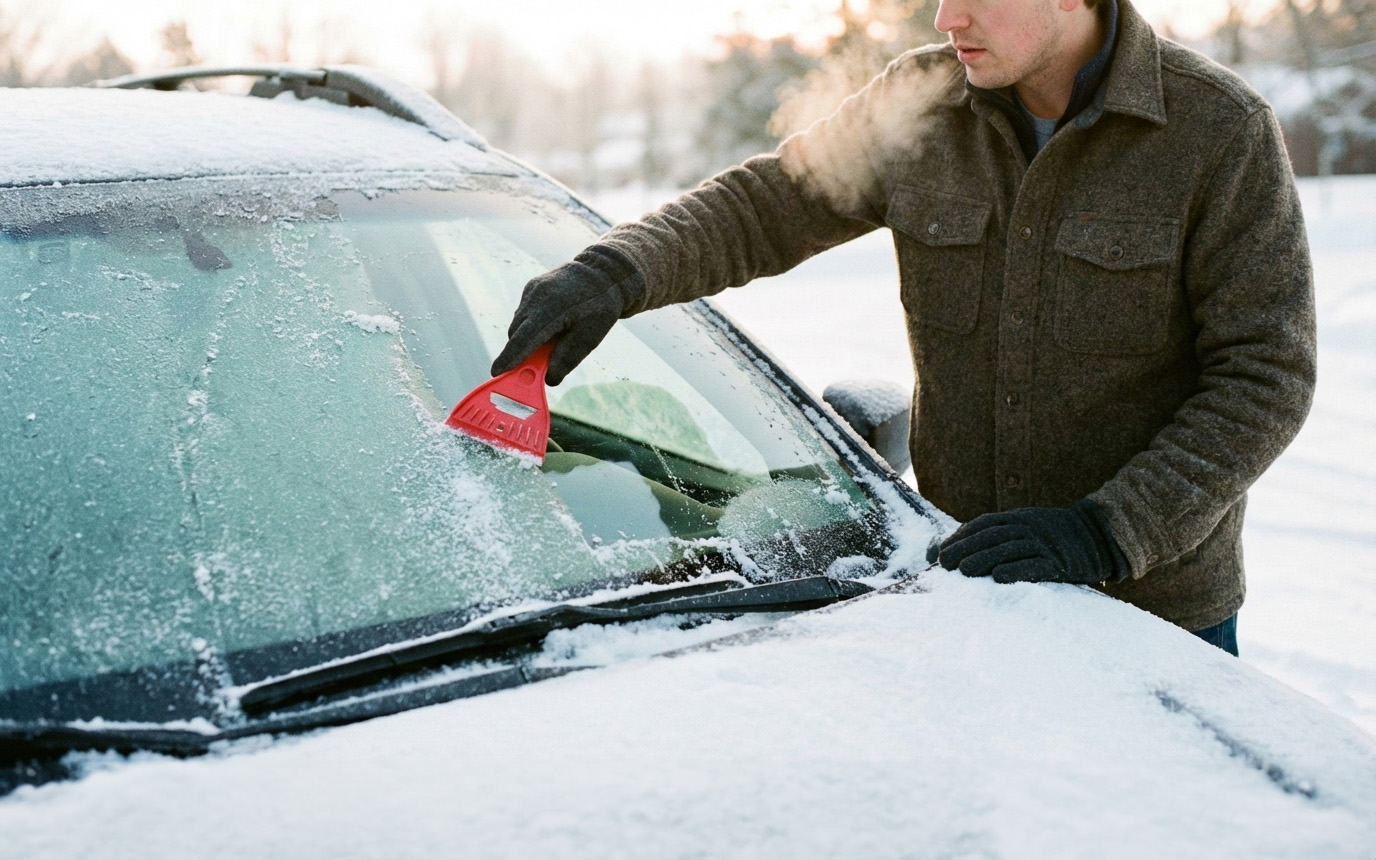When winter storms hit, one of the first challenges drivers face is a windshield covered in stubborn ice. Clearing it quickly and safely is essential for visibility, but many common methods can actually damage your glass, wipers, sensors, or paint. Some of these mistakes can even lead to cracks that require costly repairs or full replacement.
This guide covers the best and safest ways to remove ice from your windshield, followed by the worst methods you should never use. If you ever notice cracks, chips, or spreading damage after ice removal, you can use Glass.net’s free quote tool to compare local windshield repair and replacement prices in minutes.
The 5 Best Ways to Remove Ice From Your Windshield
1. Use Your Vehicle’s Defrost Setting
Turning on your defroster is one of the safest and most effective methods.
How it works:
Warm air gradually heats the glass from the inside, loosening the ice so it can be removed with a scraper.
Why it is safe:
The temperature increases slowly, which prevents thermal shock that can crack the glass.
Tip:
Turn on the rear defroster too for full visibility.
2. Use a Proper Plastic Ice Scraper
A good-quality plastic ice scraper is designed to remove ice without scratching the glass.
Why it works:
Plastic is rigid enough to break ice but soft enough to avoid damage.
Tip:
Use long, steady strokes instead of chopping or slamming the scraper against the windshield.
3. Spray a Commercial De-icer
Store bought de-icing sprays are formulated to melt ice quickly and safely.
Benefits:
They work faster than a defroster alone and can loosen thicker or more stubborn ice.
Tip:
Keep a can in your car or garage during winter months, especially if you live in a region with regular freezing temperatures.
4. Use a Safe Homemade De-icing Spray (Vinegar or Alcohol Mix)
Two simple mixes can help break down ice.
Options:
- Three parts white vinegar to one part water
- Two parts rubbing alcohol to one part water
Why they work:
Both lower the freezing point of water, helping melt ice on contact.
Tip:
Spray lightly and wait a minute before scraping.
5. Prevent Ice Buildup with a Frost Cover or Towel
Prevention is always easier than removal. Covering your windshield overnight can stop ice from forming.
Options:
- Windshield frost covers
- Old towels or blankets
Tip:
If temperatures may drop below freezing, secure a cover before going to bed to save time in the morning.
The 5 Worst Ways to Remove Ice From Your Windshield
1. Pouring Hot Water on the Glass
This is one of the most damaging mistakes drivers make.
Why it is dangerous:
The sudden temperature change can cause your windshield to crack instantly.
Even warm water can be risky, especially if the glass already has chips or stress points.
2. Using Metal Tools or Knives
Tools like metal spatulas, screwdrivers, or blades should never touch your windshield.
Why it causes damage:
Metal can scratch or gouge the glass, damage wipers, or break rubber seals.
Even one deep scratch can compromise the windshield’s strength.
3. Hitting or Punching the Ice to Break It Loose
Some drivers tap or hit the ice to break it off.
Why it is harmful:
Ice can transmit force across the glass and create cracks, especially in cold conditions when the windshield is more brittle.
This damage often starts small but spreads quickly once the car starts heating up.
4. Using Salt or Rock Salt
Salt works great on roads, but not on your car.
Why to avoid it:
Salt particles can scratch the glass and corrode metal or paint around the windshield.
Residue buildup can also damage your wipers and leave streaks.
5. Using a Credit Card or Plastic Not Designed for Ice
While it may seem harmless, a credit card or thin plastic item can bend and break.
Why it is risky:
Pieces can snap off and scratch your windshield, or you can gouge the glass with the hard edges.
It also requires more force than a proper scraper, increasing the chance of damage.
When Ice Removal Reveals Windshield Damage
Cold weather and improper ice removal commonly lead to chips and cracks. If you notice new damage after clearing ice, it is important to take care of it quickly. Small cracks can spread when your defroster or heater warms the glass, making the repair more expensive.
Glass.net makes it simple to compare prices from trusted local shops so you can choose the best option. Use our free quote tool anytime to get accurate, fast, competitive pricing for windshield repair or replacement.

To read more, visit blog.glass.net

